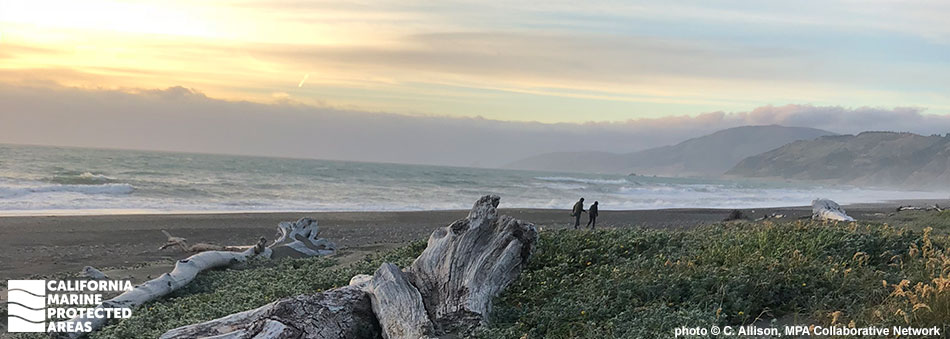
Overview
Mattole Canyon State Marine Reserve (SMR) consists of nearly 10 square miles of protected offshore waters within Humboldt County in northern California. This SMR protects submarine canyon, deep sandy seafloor, and offshore reef habitats. The deep submarine canyon, known as Mattole Canyon, extends into the sea from Mattole Valley, which is located on the adjacent, undeveloped stretch of coastline known as the Lost Coast. About three-quarters of a square mile of this marine protected area (MPA) is submarine canyon, with deep trenches where sablefish and thornyhead rockfish live.
This SMR ranges from 80 feet to nearly 1,650 feet deep in parts of the submarine canyon. The cold, rough waters are subject to seasonal upwelling that sends nutrients from the deep ocean into the water column, creating highly productive conditions. In the depths near the sandy seafloor, red octopus, petrale sole, kelp greenling, mushroom soft coral, and feather stars feed on plankton, shrimp and other crustaceans, and fields of white-plumed anemones dot the seafloor.
Regulations
It is unlawful to injure, damage, take, or possess any living, geological, or cultural marine resource.
California Code of Regulations Title 14, Section 632(b)(13)(opens in new tab)
Quick Facts
MPA size: 9.79 square miles
Depth range: 82 to 1,646 feet
Habitat composition*:
- Rock: 0.78 square miles
- Sand: 9.02 square miles
*Habitat calculations are based on three-dimensional area and may exceed the total MPA area listed above.